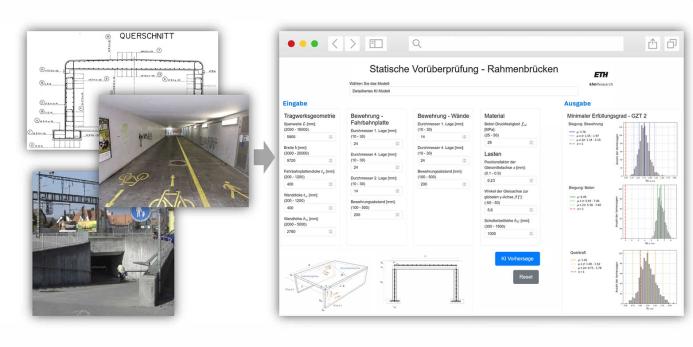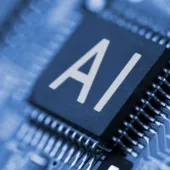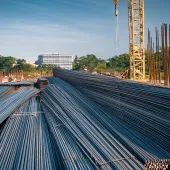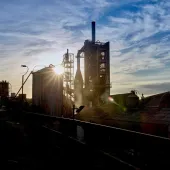AI helps assess and design concrete bridges
Swiss researchers use AI to assess and design concrete bridges
Researchers at ETH Zurich are developing artificial intelligence (AI) tools to help assess the safety of existing railway bridges and assist engineers in designing new ones. The project, carried out in collaboration with Swiss Federal Railways (SBB), aims to extend bridge lifespans and improve resource efficiency.
AI for assessing existing concrete bridges
Many railway bridges in Switzerland are reaching the end of their planned service life, raising concerns about their structural safety. Recent bridge collapses, such as the motorway bridge failure in Genoa in 2018, have highlighted the risks of ageing infrastructure.
Sophia Kuhn, a doctoral researcher in ETH Zurich’s structural engineering group, explains: “We’re developing a tool that helps to keep concrete bridges in operation for as long as possible while maintaining safety.”
The AI model focuses on ‘rigid frame bridges’ – simple reinforced concrete structures common in Switzerland. By inputting key bridge characteristics, engineers can receive an instant assessment of structural safety, helping prioritise inspections and potential interventions.
The model also assesses the reliability of its predictions, guiding engineers on whether further, more complex calculations are necessary. “Often, it’s unclear if more detailed analysis is worth the extra cost,” says Kuhn. “Our AI tool helps determine if additional calculations will be effective.”

AI in concrete bridge design
ETH Zurich researchers have also developed an AI assistant to support engineers in designing new concrete railway bridges. Traditional design processes involve repeated iterations to refine safety, cost, and sustainability. The AI assistant reverses this approach by generating bridge designs based on pre-set project goals and constraints.
“The AI assistant actively helps engineers create efficient and sustainable concrete bridge designs without compromising safety,” Kuhn explains. It can quickly evaluate different options and perform sensitivity analyses to determine which design parameters have the greatest impact on cost, sustainability, and safety.
As a case study, the research team used the Wiborada pedestrian bridge project in St. Gallen. The AI tool generated multiple bridge design options while ensuring compliance with structural and environmental requirements. However, Kuhn emphasises that engineers remain essential to the process: “We’re not offering a one-click solution. It’s always an interaction between the engineer and AI.”
Future applications
Beyond concrete railway bridges, these AI tools could be applied to other areas of civil engineering. The research team has developed an open-source toolkit that allows engineers and architects to use AI for design and structural assessments without requiring advanced programming skills.
“There’s still significant potential for greater efficiency and sustainability in construction using data-driven methods,” says Kuhn. “Our goal is to make these tools more widely accessible.”







